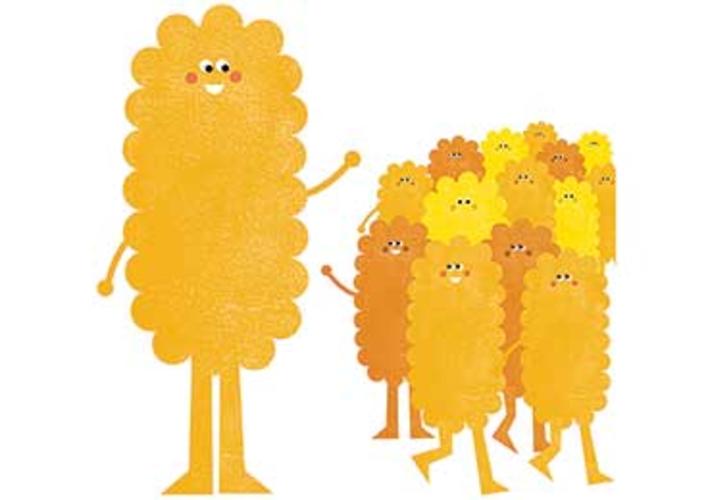Crunching the Numbers Behind Nature’s Wonders
Behind the Research: Corina Tarnita, ecology and evolutionary biology

Corina Tarnita had no idea she’d become an expert on ants. Or termites. Or amoebas. The Romanian-born Princeton professor of ecology and evolutionary biology started out as a gifted math student, before coming to the United States at 19 to earn a bachelor’s degree and Ph.D. in mathematics from Harvard.
As her numerical studies progressed, however, Tarnita feared going deeper into highly specific research areas. “It started to feel claustrophobic. I didn’t really like the feeling of knowing only three other people in the world know about your problem and care about it.”
As a diversion, she picked up a book called The Equations of Life, which offered “a math perspective on biology” and opened her eyes to a whole new area of study. “It was like putting on glasses and finally seeing something in what otherwise seemed like a blur before,” she says of applying math to life sciences.
Now, Tarnita develops mathematical models to explain the sometimes-illogical ways living organisms interact and cooperate. By Agatha Bordonaro ’04
Tarnita’s Studies: A Sampling
The Ants Go Marching During her Ph.D. studies, Tarnita questioned why worker ants forgo mating to help the queen procreate instead. “How do you get a society where millions and millions of individuals don’t reproduce?” By pairing mathematical models with lab research, Tarnita’s team was able to show the colony gained an enormous competitive advantage once six ant “daughters” were in the nest helping the queen. By splitting the tasks among the six, the whole colony became more productive — so while some ants focused on nursing larvae and cleaning parasites, others foraged for food and took out the trash.Desert Patterns Stunning honeycomb-shaped patterns formed by evenly spaced discs of dense vegetation or bare patches of earth stretch across landscapes in Africa, Australia, and South America. It puzzled researchers “that nature, at that scale, can produce such simple order,” Tarnita says. Under each of these spots was exactly one colony of termites; her team found that those colonies will expand outward until they meet another of equal size, then “they always have skirmishes at the border, but neither of them can really gain ground,” she explains. The hexagonal organization allows them to maximize resources while keeping away from neighboring colonies. Discovering that termite ecosystems can create these patterns amends theories suggesting that such circles were indicative of an ecosystem on the brink of collapse.
Loners as Insurance When food is scarce, slime molds — single-cell organisms — band together to form slug-like structures that crawl around and, once in a safe environment, produce spores. However, some cells always stay behind. While most experts dismissed these loners as defective, Tarnita found this behavior was actually an evolutionary advantage. “What if something goes wrong with the multicellular development and somehow nobody survives? Then this whole species would die out,” she explains. “So they leave a reservoir of individuals. ... They act like an insurance strategy.”














No responses yet